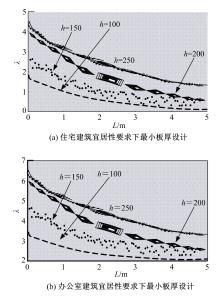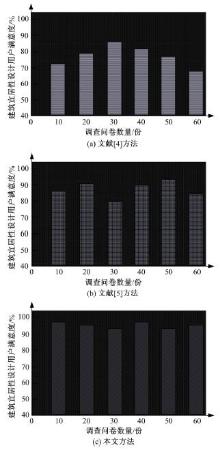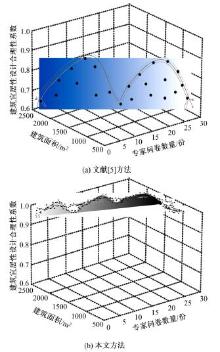Journal of Jilin University(Engineering and Technology Edition) ›› 2019, Vol. 49 ›› Issue (4): 1169-1173.doi: 10.13229/j.cnki.jdxbgxb20180415
Dynamic design of building livability based on multi⁃source spatiotemporal data
Jun ZHANG1( ),Cheng QIAN1,Chun⁃yan GUO1,Yu⁃jun QIAN2
),Cheng QIAN1,Chun⁃yan GUO1,Yu⁃jun QIAN2
- 1. School of Civil Engineering,Northeast Forestry University,Harbin 150001,China
2. Water Bureau of Jixi City of Heilongjiang Province,Jixi 158100,China
CLC Number:
- TU318
| 1 | 赵昕, 李浩, 秦朗 . 周期与层间位移角双约束条件下超高层结构优化设计方法[J]. 建筑结构学报, 2018, 39(1): 129⁃135. |
| Zhao Xin , Li Hao , Qin Lang . Optimal design method for super tall buildings under period and story drift constraints[J]. Journal of Building Structures, 2018, 39(1): 129⁃135. | |
| 2 | 魏德辉, 谌丽, 杨翌朝 . 美国波特兰的宜居城市建设经验及启示[J]. 国际城市规划,2016,31(5): 20⁃25. |
| Wei De⁃hui , Chen Li , Yang Yi⁃chao . Experience and Portland, Oregon, the USA[J]. Journal of Beijing Institute of Technology, 2015, 35(1): 20⁃25. | |
| 3 | 毕硕本, 凌德泉, 计晗, 等 . 郑洛地区史前聚落遗址人居环境宜居度指数模糊综合评价[J]. 地理科学, 2017, 37(6): 904⁃911. |
| Bi Shuo⁃ben , Ling De⁃quan , Ji Han . Fuzzy comprehensive evaluation of the human settlement environment of the prehistoric settlement sites in the Zhengzhou⁃Luoyang area[J]. Scientia Geographica Sinica, 2017, 37(6): 904⁃911. | |
| 4 | 黄安, 许月卿, 刘超, 等 . 基于土地利用多功能性的县域乡村生活空间宜居性评价[J]. 农业工程学报, 2018, 34(8): 252⁃261. |
| Huang An , Xu Yue⁃qing , Liu Chao , et al . Evaluation on livability of living space based on multiple functions of land use at county level[J]. Transactions of the Chinese Society of Agricultural Engineering, 2018, 34(8): 252⁃261. | |
| 5 | 周勇, 王蒙恩 . 城中村安置社区宜居性评价——以西安曲江为例[J]. 江苏农业科学, 2017, 45(12): 289⁃294. |
| Zhou Yong , Wang Men⁃en . Assessment of livability of resettlement community in urban villages: a case study of Qujiang in Xi’an City[J]. Jiangsu Agricultural Sciences, 2017, 45(12): 289⁃294. | |
| 6 | 党云晓, 周亚明 . 基于居民幸福感视角理解宜居城市[J]. 国际城市规划, 2016, 31(5): 14⁃19. |
| Dang Yun⁃xiao , Zhou Ya⁃ming . Understanding livable city based on the perspective of resident’s happiness[J]. Urban Planning International, 2016, 31(5): 14⁃19. | |
| 7 | 邵磊, 袁周, 詹浩 . 保障性住区公共服务设施的不同人群需求特征与满意度分析[J]. 规划师, 2016, 32(8): 106⁃111. |
| Shao Lei , Yuan Zhou , Zhan Hao . An analysis of the character and satisfaction of public housing service facilities for varied needs[J]. Planners, 2016, 32(8): 106⁃111. | |
| 8 | 徐文辉, 唐立舟 . 美丽乡村规划建设“四宜”策略研究[J]. 中国园林, 2016, 32(9): 20⁃23. |
| Xu Wen⁃hui , Tang Li⁃zhou . Research on the “four desirable" strategy in beautiful countryside planning and construction[J]. Chinese Landscape Architecture, 2016, 32(9): 20⁃23. | |
| 9 | 何璘, 周颖悟 .黔东南地区人居环境评价及优化策略研究[J].中国农业资源与区划,2016,37(10):83⁃87. |
| He Lin , Zhou Ying⁃wu . Assessmentand optimization of human settlement environment⁃a case study of southeast region[J]. Chinese Journal of Agricultural Resources and Regional Planning,2016,37(10):83⁃87. | |
| 10 | 杜红波, 刘少坤, 韩颖 . 设计以人为本的街道——以东莞市东城世博商业圈道路设计为例[J]. 城市交通, 2017, 15(3): 36⁃42. |
| Du Hong⁃bo , Liu Shao⁃kun , Han Ying . Designing user⁃oriented street: a case study of Dongcheng Shibo commercial area in Dongguan City[J]. Urban Transport of China, 15(3): 36⁃42. |
| [1] | Ning⁃hui LIANG,Qing⁃xu MIAO,Xin⁃rong LIU,Ji⁃fei DAI,Zu⁃liang ZHONG. Determination of fracture toughness and softening traction⁃separation law of polypropylene fiber reinforced concrete [J]. Journal of Jilin University(Engineering and Technology Edition), 2019, 49(4): 1144-1152. |
| [2] | Lei ZHANG,Bao⁃guo LIU,Zhao⁃fei CHU. Model test of the influence on shield shaft owing to water loss settlement of deep sandstone aquifer layer [J]. Journal of Jilin University(Engineering and Technology Edition), 2019, 49(3): 788-797. |
| [3] | ZHENG Yi-feng, ZHAO Qun, BAO Wei, LI Zhuang, YU Xiao-fei. Wind resistance performance of long-span continuous rigid-frame bridge in cantilever construction stage [J]. 吉林大学学报(工学版), 2018, 48(2): 466-472. |
| [4] | NI Ying-sheng, SUN Qi-xin, MA Ye, XU Dong. Calculation of capacity reinforcement about composite box girder with corrugated steel webs based on tensile stress region theory [J]. 吉林大学学报(工学版), 2018, 48(1): 148-158. |
| [5] | CHEN Zhong-min, HOU Li, DUAN Yang, ZHANG Qi, YANG Zhong-xue, JIANG Yi-qiang. Vibration analysis of a new pin-cycloid speed reducer [J]. 吉林大学学报(工学版), 2018, 48(1): 174-185. |
| [6] | WANG Teng, ZHOU Ming-ru, MA Lian-sheng, QIAO Hong-xia. Fracture grouting crack growth of collapsible loess based on fracture theory [J]. 吉林大学学报(工学版), 2017, 47(5): 1472-1481. |
| [7] | ZHENG Yi-feng, MAO Jian, LIANG Shi-zhong, ZHENG Chuan-feng. Negative skin friction of pile foundation considering soil consolidation in high fill site [J]. 吉林大学学报(工学版), 2017, 47(4): 1075-1081. |
| [8] | LI Jing, WANG Zhe. Mechanical characteristics of concrete under true triaxial loading condition [J]. 吉林大学学报(工学版), 2017, 47(3): 771-777. |
| [9] | GUO Nan, ZHANG Ping-yang, ZUO Yu, ZUO Hong-liang. Bending performance of glue-lumber beam reinforced by bamboo plyboard [J]. 吉林大学学报(工学版), 2017, 47(3): 778-788. |
| [10] | ZHANG Jing, LIU Xiang-dong. Prediction of concrete strength based on least square support vector machine optimized by chaotic particle swarm optimization [J]. 吉林大学学报(工学版), 2016, 46(4): 1097-1102. |
| [11] | GUO Xue-dong, MA Li-jun, ZHANG Yun-long. Analytical solution of the double joint layer composite beam with shear-slip under vertical concentrated load [J]. 吉林大学学报(工学版), 2016, 46(2): 432-438. |
| [12] | HOU Zhong-ming, WANG Yuan-qing, XIA He, ZHANG Tian-shen. Simply-supported steel-concrete composite beams under moving load [J]. 吉林大学学报(工学版), 2015, 45(5): 1420-1427. |
| [13] | ZHANG Yan-ling, SUN Tong, HOU Zhong-ming, LI Yun-sheng. Bending-torsion characteristics of steel-concrete curved composite beams stiffened with diaphragms [J]. 吉林大学学报(工学版), 2015, 45(4): 1107-1114. |
| [14] | WANG Chun-gang, ZHANG Zhuang-nan, ZHAO Da-qian, CAO Yu-fei. Experimental investigation of Σ-section channel steel with complex edge stiffeners and web holes under axial compression [J]. 吉林大学学报(工学版), 2015, 45(3): 788-796. |
| [15] | LI Hai-feng,GUO Xiao-nong,LUO Yong-feng,GAO Xuan-neng. Collapse resistance behavior of Ferris wheel with stay cables [J]. 吉林大学学报(工学版), 2015, 45(2): 406-413. |
|
||





